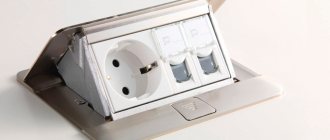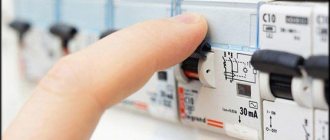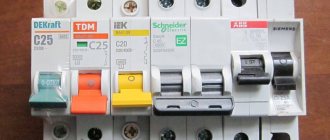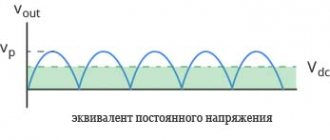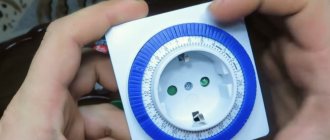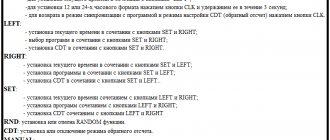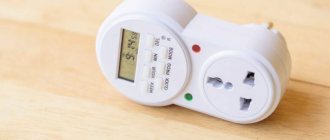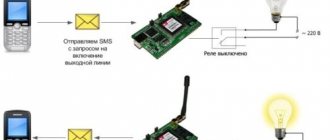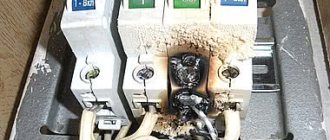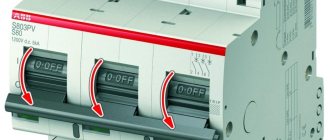Modern technologies make it possible to turn on and off the power supply of various devices without physical effort. Automated power management systems are used in various fields - from household appliances and smart home software and hardware systems to complex industries. A switch with a shutdown timer allows you to automatically stop the supply of current to the device. Next, we will consider the principle of operation of these devices and consider their varieties.
Classification of switches
The market offers models from different manufacturers that differ in functionality. They are divided according to the method of control:
- keyboard type devices. To start their work, the user must click on the button. The shutdown will occur automatically after the end of the time period specified by the owner;
- gadgets with built-in sensors (motion, humidity, etc.). Their purpose is to control equipment indoors (residential and commercial) and outdoors (for example, to organize lighting in a park). They close the electrical circuit when an event is detected in the action field and open it according to a set timeout;
- with a clock mechanism and/or an events calendar. This type is often used in security systems where lighting equipment is required to turn on to create the effect of occupancy or raise an alarm. They are capable of starting/turning off by timer and operating in random mode.
Another classification is based on the degree of power autonomy:
- autonomous devices;
- entirely dependent on the external network.
Typically, smart switches require additional power supply. In the first case, they can operate on batteries, and in the second, only on mains power. At the same time, there are varieties where the program does not get lost after power failures (with non-volatile memory or mechanical timer), and reset settings. Batteries/accumulators of autonomous options can provide up to a day of operation.
Device selection criteria
Key indicators for product selection:
- The number of equipment available for connection to one mechanism.
- Dimmer available. It allows you to control the lighting level.
- Equipped with a timer.
- Possibility of remote use.
Case material – glass or plastic. Glass is more expensive than plastic. There are many manufacturers and models on the market, so you can choose an option to suit your needs and financial capabilities.
Note! The voltage of the electrical network must comply with the requirements in the instructions for the specific device.
Operating principle
All switching devices operate according to a single scheme: at the right moment specified by the owner, they connect the elements of the circuit or open it. In this case, for example, the lights in the room are turned off without the need to manually press a button.
To implement this function, the working mechanism is equipped with an analog or digital timer, time relay, built-in microcontrollers and other necessary parts. Thanks to them, it becomes possible to control light, ventilation and other controlled equipment.
According to the principles of closing and opening the circuit, devices are divided into the following categories:
- with a mechanical (analog) rotary or flip-type timer. Rotary ones are equipped with a rotating contact mechanism that releases current through the circuit in some positions of the rotating toggle switch. But changeover ones work according to a slightly different scheme - on a metal conductive plate and three pairs of contacts. The plate is thrown over one of the pairs and closes the circuit;
- with built-in electronic timer. The main element of such a gadget is a relay. When the user presses the button, the circuit is opened or connected and the relay is activated. The electronic switch can be programmed to perform certain actions according to the wishes of the owner and the capabilities of the device.
The timer can be controlled:
- microswitches, setting them to a certain position;
- turning the control wheel;
- using mechanical or touch buttons on the front panel;
- from a remote control, key fob or phone application.
The timer start/stop interval can be set in the range from several seconds to days and weeks. There are examples where you can set a schedule for a whole year in advance.
Electronic and mechanical
An analog mechanical timer is the simplest type; such devices in one form or another have been used by mankind for many centuries. Modern versions usually consist of an analog knob, by rotating which the owner sets the shutdown time. The handle has a graduated scale that can indicate seconds, minutes, hours and days - the size of the scale depends on the specific device. The electricity will be supplied until the set time has elapsed, but after that it will turn off automatically.
The design of a mechanical relay is very simple, but not without its drawbacks:
- it is impossible to set the random operation mode;
- it is impossible to formulate complex and branched tasks;
- less accuracy in relation to electronic digital samples.
An electronic timer is a device with a logical chip that controls the behavior of the system and control elements with which the owner sets the program. As a rule, gadgets of this type are equipped with an LCD screen. Their features:
- the screen displays the status and settings of the device;
- the front panel contains functional control buttons;
- supports many options and setting operation algorithms;
- high accuracy thanks to digital timing (down to milliseconds);
- ability to create a schedule up to 365 days (depending on model).
Electronic options are very popular because they have flexible functionality, accuracy and multitasking. But they often require additional power, and the memory is not always non-volatile, which should be taken into account.
Main types of devices
The operating principle of timers is based on connecting and disconnecting contacts that control the light at a specific period of time. For example, the owners of a house or apartment can, when leaving, set a timer to turn on the heating system dependent on electricity, and enjoy a comfortable temperature when they return home.
All devices are powered by electricity, but the timer itself can be mechanical or electronic.
Devices with a mechanical timer
The mechanical time-delay switch model operates thanks to special design petals. To start the mechanism, the user must set the time on the body of the electrical device. Each petal corresponds to a 15-minute or 30-minute period of time. Thus, the timer setting is adjusted using a rotating dial. During the designated period of time, the consumer will receive electricity, and after the mechanical timer is triggered, the electricity will be cut off automatically.
The device has a simple design, but it has a number of disadvantages:
- low accuracy of the timer;
- inability to set difficult tasks;
- It is not possible to set the random operating mode.
However, the mechanical model can operate on backup batteries. The circuit diagram of the device is quite simple and includes a connection to a distribution box, a phase, ground and zero, an electrical device (luminaire, lamp), and outputs to a switch.
Switches with electronic timer
Almost all models of electronic type switches operate with a weekly programming time interval. The devices are equipped with a liquid crystal screen, on which it is convenient to set the device settings. Features of the electronic device:
- information about program parameters is displayed on the screen;
- equipped with several functional buttons;
- has a large selection of options - up to 150;
- has low dispersion - no more than a minute;
- You can install the switch yourself using the diagram.
An electronic timer definitely has advantages over a mechanical device. The time can be set with high accuracy; various options for controlling lighting and energy-dependent devices are provided. The impressive number of functions of the electronic time delay switch allows you to customize the timer to meet specific user needs.
Modifications and scope
Devices with timers are widely used in industry and everyday life. They help control a wide variety of devices and processes occurring in electrical networks. They can be found in factory workshops, apartments, residential private houses, and so on. Switches vary in operating principles, characteristics and design. Let's look at some common varieties.
Time relay
This is the simplest type of switch - the user sets the required interval (or indicates it on the built-in clock), after which, when a given point on the time scale is reached, it turns off or performs another action. There are both the simplest mechanical and electronic reference systems (for example, those that control multicookers, microwave ovens and other household appliances), as well as complex electronic ones with many functions and the ability to set branched program algorithms.
Timer watchdog
This timer switch helps protect your premises from unauthorized entry. When activated in a room left unattended for a long time by the owners, it begins to imitate the visual presence of the residents. The “watchman” program from time to time in a random (or specified by the owner) order turns on and off the lighting of the rooms. From the street you get the feeling that there is always someone at home.
Lighting controller with motion sensor
Such a light switch with a timer and motion sensor is very effective in residential buildings, for commercial real estate and for organizing street solutions. An infrared sensor as part of the complex detects movement events of moving people and sends appropriate commands to the relay that controls the lighting. A distinctive feature of such devices is their smooth switching, which extends the life of the lamps.
The touch lighting controller is equipped with a customizable sensor: its sensitivity is configured at the request of the owner. The activation period of the lighting devices is also adjustable, and the switch with a shutdown delay is able to withstand a certain timeout before supplying power to the lamps.
Button controllers
An electric push-button switch has a mechanical button and operates when pressed. After completing this action, the light will automatically turn on or go off after a set period. Some gadgets of this type are programmed for a day, others for a week or more. They are often installed in garages, basements, toilets and other rooms where this type of use is suitable.
Disabling ventilation systems
Any apartment or private house has a ventilation system. It is often supplemented with an active hood with a fan, the rational use of which may require additional control. For example, in the absence of people, a hood is not needed, but when they appear and the lights are turned on, it should turn on, work for a while and turn off (or stop working after people leave and the lights turn off). A system with a timer is useful for this.
Some versions of such complexes are also equipped with a humidity sensor, which helps monitor indoor air parameters.
What to choose
The first thing you should do to choose the right device with a timer is to clearly imagine what tasks it will need to perform. The type of device and its model will depend on this. For example, a simple mechanical controller is not suitable for setting a long schedule, and vice versa - an expensive electronic gadget is not needed for simple tasks.
It is important to understand that to implement some solutions you may need additional sensors, relays and other components. This is especially true for ecosystems such as “smart home”, where all elements are coordinated and work on the same network. Therefore, it is advisable to choose a modification with a maximum of already integrated necessary elements and ease of interfacing with external ones.
The next point is the installation location. This should also be taken into account. For example, a time controller installed in a bathroom or other wet room must have a moisture-resistant housing, and a system for outdoor installation needs protection from temperature changes, dust, rain and vandals.
In addition, the following factors are important:
- the desired method of controlling the timer - digital or mechanical;
- technical capabilities (voltage, current, etc.);
- type of installation of the device - on a rail, in a distribution box, socket or socket box.
If the choice is made from simple, inexpensive models, you need to determine the frequency of switching off the controlled devices. If it is necessary to repeat daily processes, modification with the ability to set a program for the day is sufficient. And when triggering is required on certain days of the week/month, an appropriate timer is also needed with the ability to set triggering according to a schedule. It is more functional, but also costs more.
In situations with the organization of complex automated control of several power lines of devices, one cannot do without a complex electronic multifunctional switch with support for several schedules and scenarios.
For a smart home
Recommendations for choosing an automated switch for a smart home system are generally similar, but there are several nuances.
Firstly, it is advisable to select an option that is compatible with the selected smart home ecosystem. This will avoid problems with integration, simplify the inclusion of the device in a common network and provide full functionality, including remote control, status monitoring, and so on.
Secondly, simple mechanical timers are of little use here. This requirement comes from the first: a “smart home” implies the integration of all components, while “mechanics” does not provide for this.
Equipping a smart home with “smart switches” significantly increases the comfort of residents and helps save natural resources. It also seriously improves security: for example, a set lighting inactivity timeout will allow you not to worry about lights or electrical appliances not being turned off. A “smart socket” with a built-in timer or a controller in a junction box will do this for people.
Examples of using
Let's look at some scenarios for using timers in real situations.
Lighting in the park, on the porch, in the house
Today this scheme is very popular. When organizing a lighting system in a park or square, a motion detector with a timer is installed in the circuit (usually infrared, as the simplest and most reliable).
When a person appears in its field of vision, the sensor is triggered and sends a signal to the relay that turns on the lights. At the same time, the time counter is activated, and when the specified interval has elapsed, the lamps go out (provided that the sensor does not detect new movement). This achieves two goals:
- energy savings;
- path lighting on demand.
Schemes are implemented in a similar way in residential and non-residential premises.
Automatic hood
This scenario has already been discussed above. A motion sensor is also used here. When people appear in its field of vision, it starts the exhaust system and freshens the air in the room. When people leave, a time relay turns off the device after a certain period.
Electronic locks
Many modern locking systems are equipped with a timer that closes the lock after a set period of inactivity.
Smart plugs
A socket with a built-in electronic time counter is capable of turning off the load connected to it according to a schedule or the results of monitoring energy consumption parameters. As already mentioned, this allows you to avoid troubles due to forgotten electrical appliances.
This is just a small list of examples of using timers - their scope is very wide.
Photo relay on timer 555
The 555 sleep timer is a universal one, one of the most common devices for generating single and repeating signals (pulses), stably linked to time intervals. Based on the 555 timer and a phototransistor, it is possible to manufacture a photo relay that operates from a 12V network.
Application
Photo relays based on timer 555 are used to automate lighting networks: external, indoor, etc.
General view of timer 555
